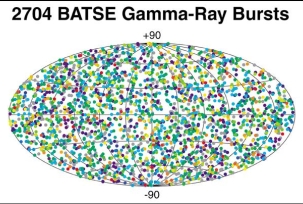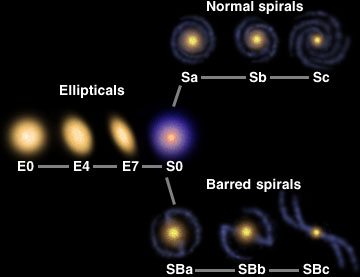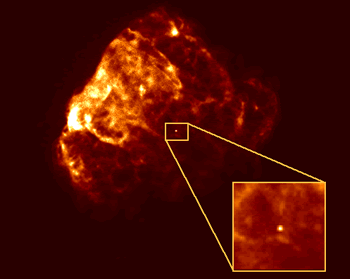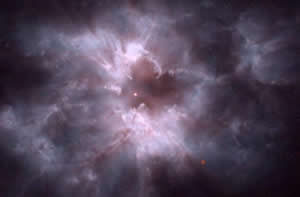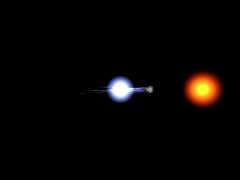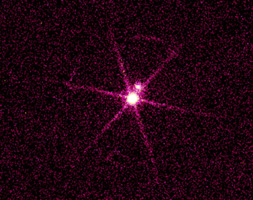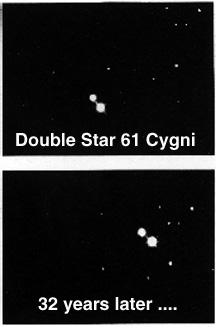
Stars change position over time. In these two pictures, the double star, 61 Cygni, moved compared to the stars in the background.
61 Cygni A & B
| What's in a Name: | Double Star designated 61 in Cygnus the Swan |
| Claim to Fame: | Some of the closest stars to the sun(13th closest). Moving very rapidly through space as seen from Earth at a rate of ~45,000 miles per hour (72,000 km/hr) |
| Type of Star: | Orange-red Main Sequence (Spectral Class K3.5 and K4) |
| How Far Away: | 11.3 light years |
| How Big: | 1/2 and 2.4 times the sun's radius |
| How Bright: | 1/12 and 1/26 of the sun's visible brightness |
| Where to View: | Barely visible to the unaided eye on a dark, moonless night. Located in Cygnus the Swan, also called the Northern Cross (Star Map). |
| When to View: | June through November from northern middle latitudes. |
Last modified February 24, 2005 by Travis Metcalfe.






